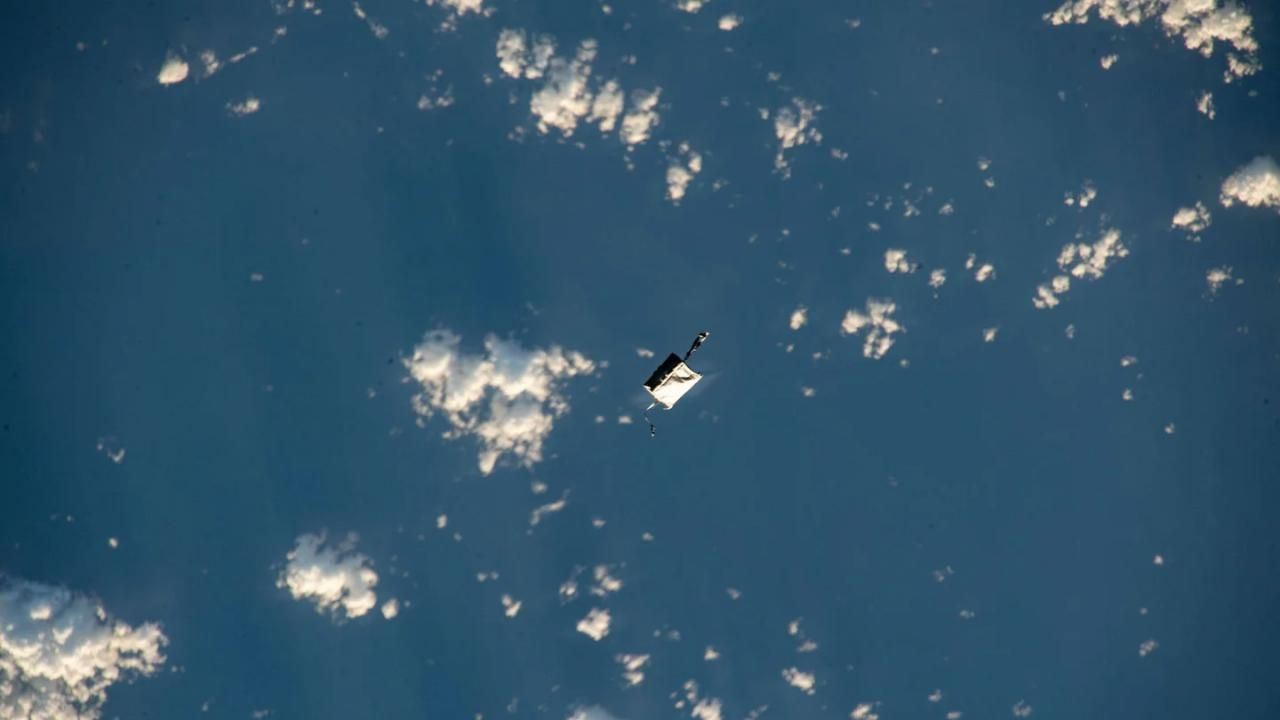See the ISS tonight, and the tool bag dropped during last week's spacewalk

NASA astronauts Jasmin Moghbeli and Loral O'Hara were outside the International Space Station (ISS) on Wednesday (November 1) morning, doing some maintenance on the solar arrays that power the station. During that spacewalk, a large white bag containing tools got away.
Mission Control analyzed the trajectory of the latest wayward bag and determined the risk of it colliding with the station is low and now action is required. The U.S.Space Force has also cataloged this new satellite, as it does all objects larger than a softball, as NORAD Catalog ID 58203 / International Designator 1998-067WC. joining 143 other bits of debris lost over nearly 25 years of ISS spacewalks, 93.8% of which has already deorbited.
Astronauts Peggy Whitson and Shane Kimbrough lost a debris shield they were attempting to install on the ISS during a 2017 spacewalk. Like a scene out of Apollo-13, Mission Controllers put their heads together and created a substitute using available materials on the station.
While NASA astronaut Heidemarie Stefanyshyn-Piper was dealing with the mess created by a grease gun that burst inside her tool bag, the bag drifted away too. Even the very first American spacewalker, Ed White, lost one of his space gloves during that 1965 mission.
Space suits are essentially self-contained spaceships and very bulky as a result. Each astronaut I've asked about the challenges of working outside the station mentions one thing: how stiff the gloves are. The pressure inside the suit is lower than what we feel here on Earth (8.3 psi vs. 14.7) but with nothing pushing on the outside, grasping things in those gloves isn't easy. Tools and other objects get away sometimes.
The bag was last seen by astronauts floating away from the station over Japan. European Space Agency Meganne Christian shared video of the moment the bag got away.
Gianluca Masi of the Virtual Telescope project captured this image later that evening, of the tool bag as it passed over his remote telescope in Italy.

Over the next few days, the bag settled into an orbit a few minutes ahead of the ISS.
As Earth's gravity takes over in the coming weeks, the tool bag will be moving through more and more air, slowing it. Because that outer layer of atmosphere is so uneven, it is difficult to pinpoint exactly when the tool bag will meet a fiery end, burning up as it reenters the atmosphere.
But until then, it just bright enough to be seen from Earth. It has a brightness of about magnitude 6, which is at the very edge of visibility with the naked eye, but only in really dark locations. A decent pair of binoculars could bring it into view even from the suburbs.
How to see the tool bag
The best chance to see the tool bag is Saturday evening, November 18m shortly after sunset. Look for a dim white dot rising from the southwest horizon at 5:15 pm. 5 minutes later it will be nearly overhead before setting at 5:25 in the north east. It may appear to slowly flash as it tumbles through space.
Look for it again, much lower and a bit dimmer as you look through more atmosphere, along the northern horizon from the west to the north east beginning at 6:57
Very bright ISS pass tonight
You wont need binoculars to see the International Space Station as it passes over Saturday evening. It will be very bright as is also rises the southwestern horizon around 5:35 pm. It will appear as a bright white, fast moving dot nearly overhead by 5:38 pm before setting on the north eastern horizon at 5:42 pm.
Sunday evening, the ISS will skim the northern horizon rising at 6:25 pm in the northwest and setting 4 minutes later in the north. Monday look for the ISS to rise at 5:37 from the west and set about 3 minutes later in the northeast.
NASA's Spot the Station website and mobile apps offers more sighting opportunities as well as email and text alerts to let you know when to go outside and look.









